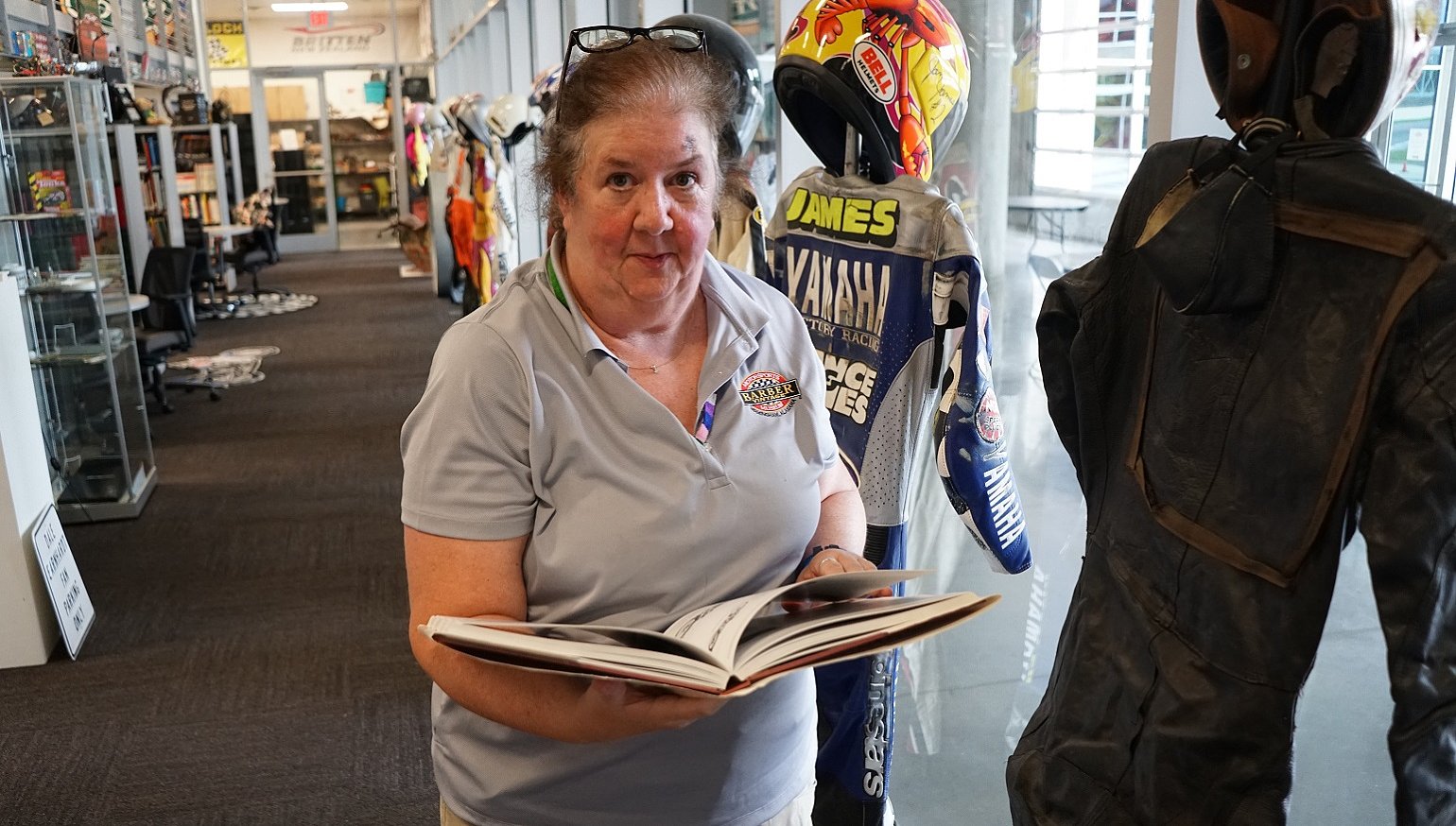Twenty-five years ago, Lee Woehle cleaned out a closet at the Barber Vintage Motorsport Museum’s old location in downtown Birmingham, Alabama. Now, she’s the doyenne of one of the motorcycle world’s premiere research libraries.
Woehle was trained as an artist. Her first connection to the Barber collection came when she borrowed a motorcycle for a sculpture project. The piece involved making a clay mold of the bike. It took longer than expected for the mold to dry, so she busied herself by cleaning out a closet. Jeff Ray (now the executive director of the museum) noticed her natural penchant for organization and mentioned that he was looking for librarian.
“I said, ‘Well, I do know something about that,’” she recalled. “Although my studies were in art, all of my work experience from high school onward had been as a librarian or archivist. Before I came to work for Mr. Barber, I was working at the Museum of Art here. It was quite a change to go from teaching people about Wedgewood and silverware to learning about magnetos and carburetors.”
Although she’d never ridden motorcycles up to that point, she took a motorcycle safety course to gain a basic understanding of the machines surrounding her in her new position. I’m not sure the MSF fully prepared her for some of the experiences she later had, like coasting one of John Surtees’ MV Agustas (not running) down the inside of the Guggenheim Museum when they were setting up “The Art of the Motorcycle,” or running the museum’s Britten on the dyno.
“I’ve always had a mechanical interest,” she noted with a smile.
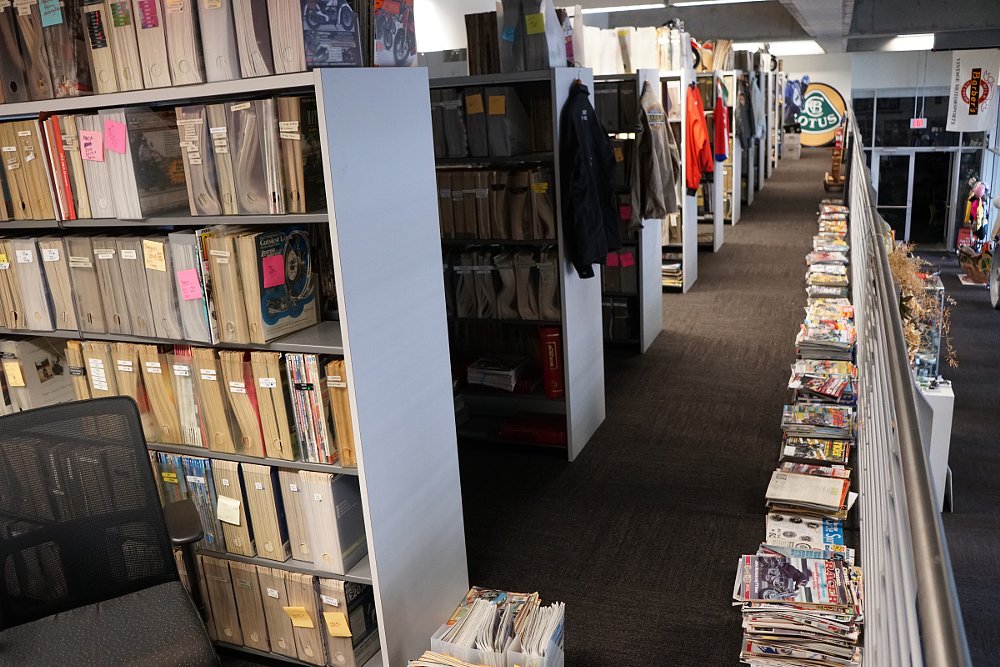
Surtees’ and Hailwood’s motorcycles will always be preserved because they’re rare and have an obvious inherent value. But there’s a reason that curators, archivists, and librarians refer to printed material as “ephemera.” Magazines, posters, brochures and the like were produced in large quantities, had little inherent value, and were published to be read and then thrown away.
“The main purpose of starting the library was to gather information needed to restore and work on the motorcycles in the collection,” Woehle explained. “The initial focus in building the library was what was on the bench right then. We gathered information on Matchless G50s because we were racing them.”
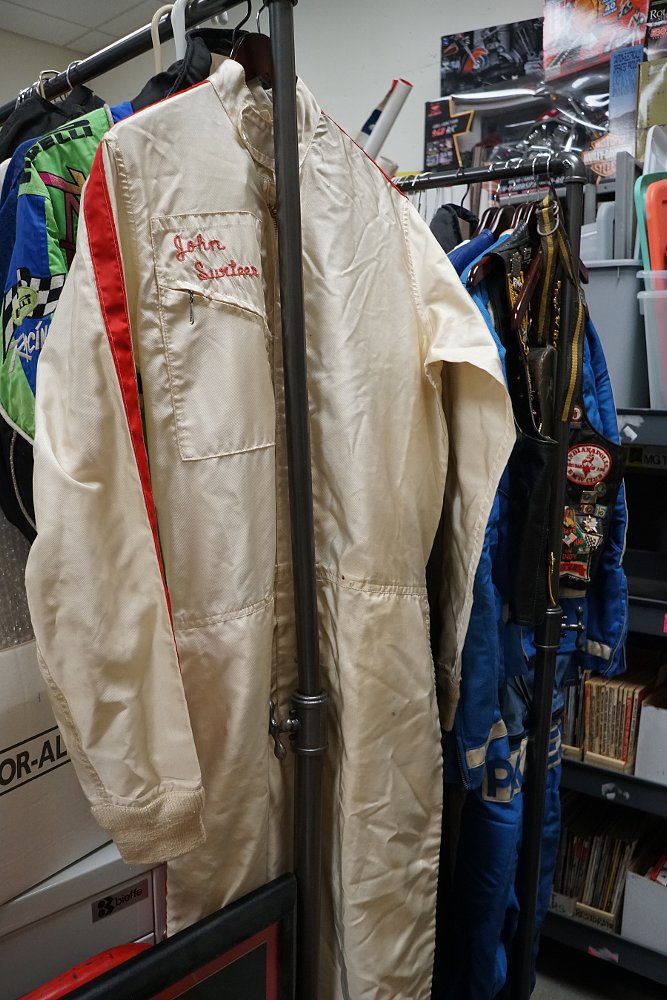
“As more and more bikes were added to the collection, we began collecting books on any motorcycle topic,” she continued. “We have books for children, we have a large section of travel books, we have novels and videos. So yes, we still help the guys [here at the Museum] on whatever they’re working on, but we also do a lot of research for outside people, like someone who’s working on a Triumph who wants to know what color it would have been in 1957.”
She’s worked with film and TV producers, keeping them historically accurate. And with ordinary folks who are just trying to identify bikes in old family photos. Increasingly, such work is done via the Internet, but some people use the library for in-person research.
When the Museum opened in 2003, it was already the largest motorcycle museum. Originally, the library was on the main floor where it was visible to visitors. But in 2017 the museum opened an 85,000-square-foot annex. At that time, the Library moved into the basement, a level that is normally off-limits to visitors. It didn’t need to have much of a public face.
“Our library doesn’t lend materials; nothing can go out,” Woehle explained. “If you’re working on something specific and you really want to come here, you can make an appointment and I’ll pull material and sit with you. Then as we talk I’ll often realize that I have something else that will help them.”
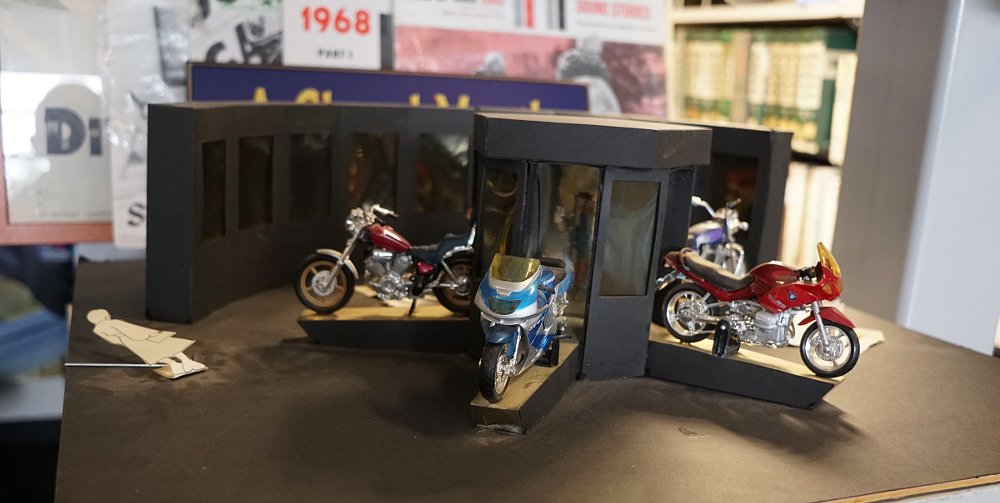
Building the biggest motorcycle collection
Librarians and archivists tend to be obsessive categorizers.
“If we just used the Dewey Decimal System, all books about motorcycles or cars basically would go in the same place, so we created our own,” she told me as we walked through the stacks. Books about motorcycling in general are grouped together; there is a section for books about racing; individual marques; nationalities; technical manuals... more than 13,000 titles are cross-indexed in Woehle’s system.
Woehle buys a lot of books, often from other libraries that are thinning collections. “My father was a ‘picker’ before that was really a word,” she said. In her role at the Barber, she keeps the family tradition alive. If she finds a book that is already in the collection but is being sold below its collector value, she’ll sometimes buy it for resale and use the proceeds to acquire something else on her “want” list.
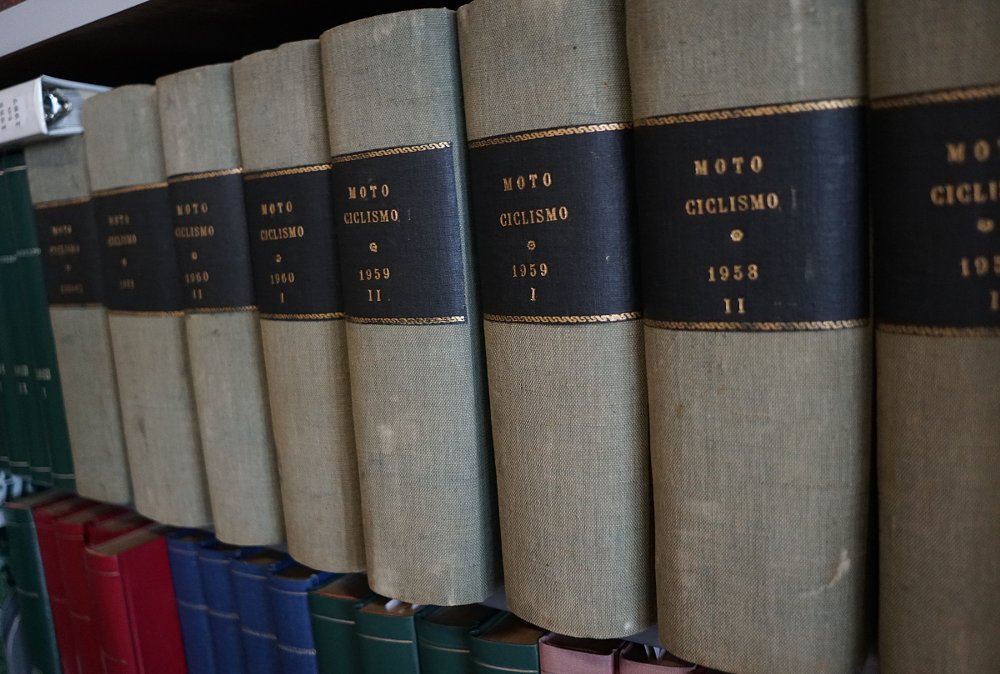
But as the Museum’s fame has spread, more people are donating their entire collections. After walking me through the book stacks, she opened a door into a cavernous empty section of the new addition, where a dozen industrial shelving units were stacked with boxes of material that had been catalogued but not shelved. Behind that were another dozen pallets also stacked with boxes. Before long the library and archives will need to expand.
At this point, the library collection includes 365 different magazine titles, most of which are complete or nearly so. “I have a database that tells me which ones I’m missing,” she says. Many magazines were printed on acidic pulp paper that becomes brittle with age, so they must be handled with care. That makes some finds even more precious. Barber’s lead restorer Chuck Honeycutt was on a racing trip in Italy when he met a guy who wanted to sell years of “Motociclismo” — Italy’s motorcycle magazine of record — that had been professionally bound into hardcover annual volumes. They were in perfect condition. Needless to say, he bought them on the spot.
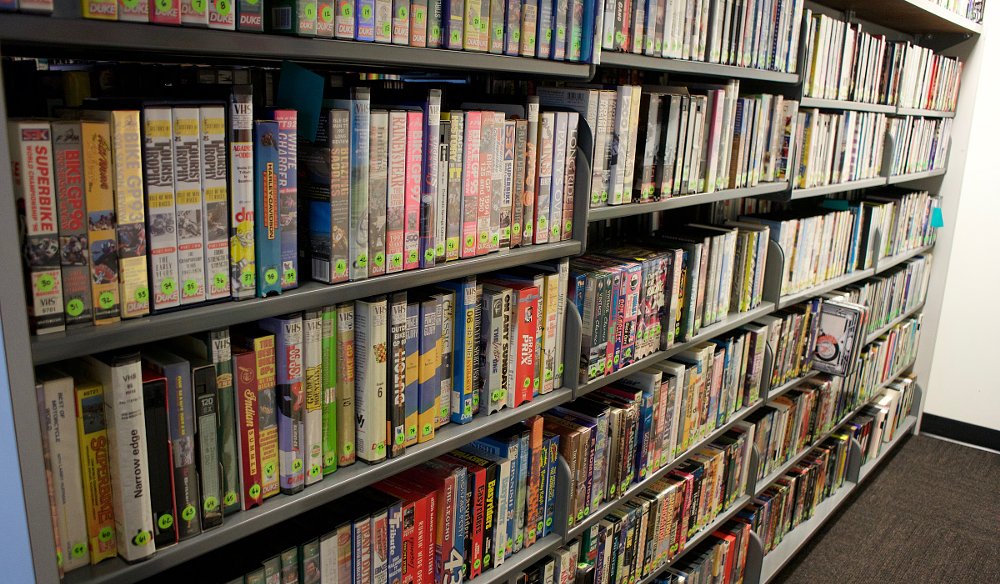
The crowded library is a repository for more than just printed material. There’s about 1,000 videos on VHS or Beta tape, or DVDs. And it houses varied collection of other artifacts and knick-knacks ranging from the sublime (leathers Mike Hailwood wore in the TT) to the ridiculous (an Andy Warhol doll dressed in a black leather biker jacket). Out of sight in a storeroom I came across a Nomex suit worn by John Surtees, the only World Champion on both two and four wheels. I felt as if I’d found a sliver of the True Cross.
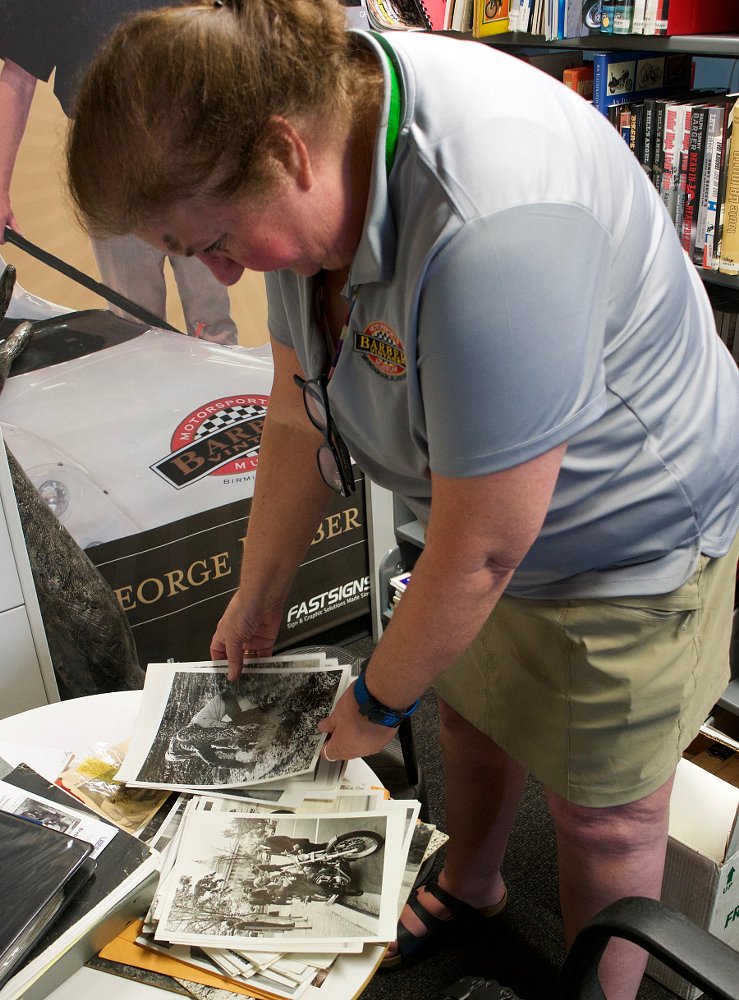
Although many of Grothe’s prints and negatives were destroyed in a house fire years ago, she bequeathed nearly 3,000 8-by-10 prints to the Barber Museum upon her death. She documented a terrific period in American racing, including the very first AMA Superbike race. Woehle is currently choosing two dozen images for exhibition in the museum.
Woehle took pains to say that she doesn’t feel that her research library is the best of its kind. She cited Revs Institute in Naples, Florida, and Lemay America’s Car Museum in Tacoma, Washington, as two larger collections. But motorcycles are an afterthought at those places. I’m sure that she presides over one of the very best motorcycle-centric collections in the United States.
What lasts and what doesn't?
Seeing all this ephemera carefully catalogued and preserved caused me to wonder how much of my own work will be preserved. I started writing about motorcycles and motorcycle racing in the print era but now the majority of my writing appears online only. And while we’re told (or should I write “warned”?) that the Internet is forever, that hasn’t been my experience.
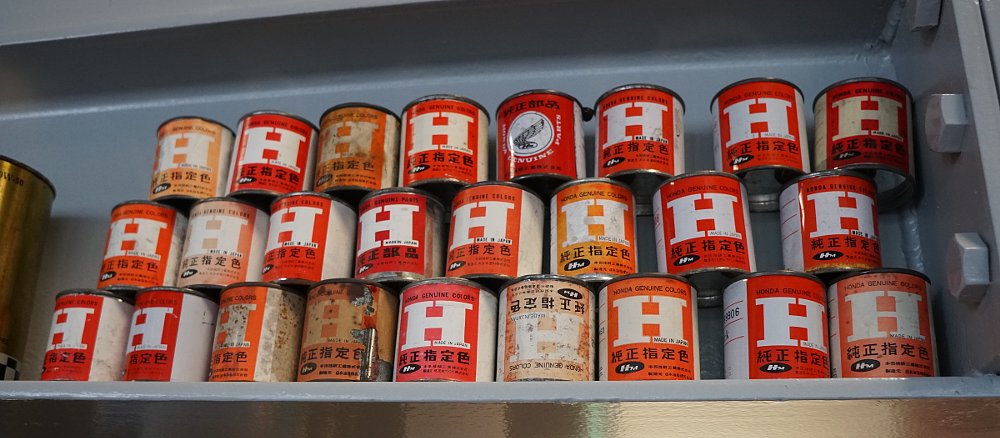
I wrote hundreds of Backmarker columns on the old RoadRacerX.com website, and when that site went dark the owners didn’t even back it up. After the demise of Road Racer X, Motorcycle-USA.com picked up my column and I put up hundreds more posts over several years. But eventually Motorcycle-USA was killed off, too. Some of those old columns are preserved on the Wayback Machine Internet Archive, but many were not.
Since those days I’ve replaced old computers, lost backup hard drives or had them fail. When I published "On Motorcycles: The Best of Backmarker," I was able to retrieve some columns that had been sent to my editors as e-mail attachments and were thus preserved in my sent folder. But a significant chunk of my digital-only work is, as far as I know, simply gone.
Meanwhile, Lee Woehle has a complete set of The Motor Cycle from its launch in 1903 until its demise in 1967. So what was permanent and what was ephemeral?
On the topic of things finding a permanent home... If you happen to have Cycle World’s January and September issues from 1962, she would love to hear from you.

 Membership
Membership

